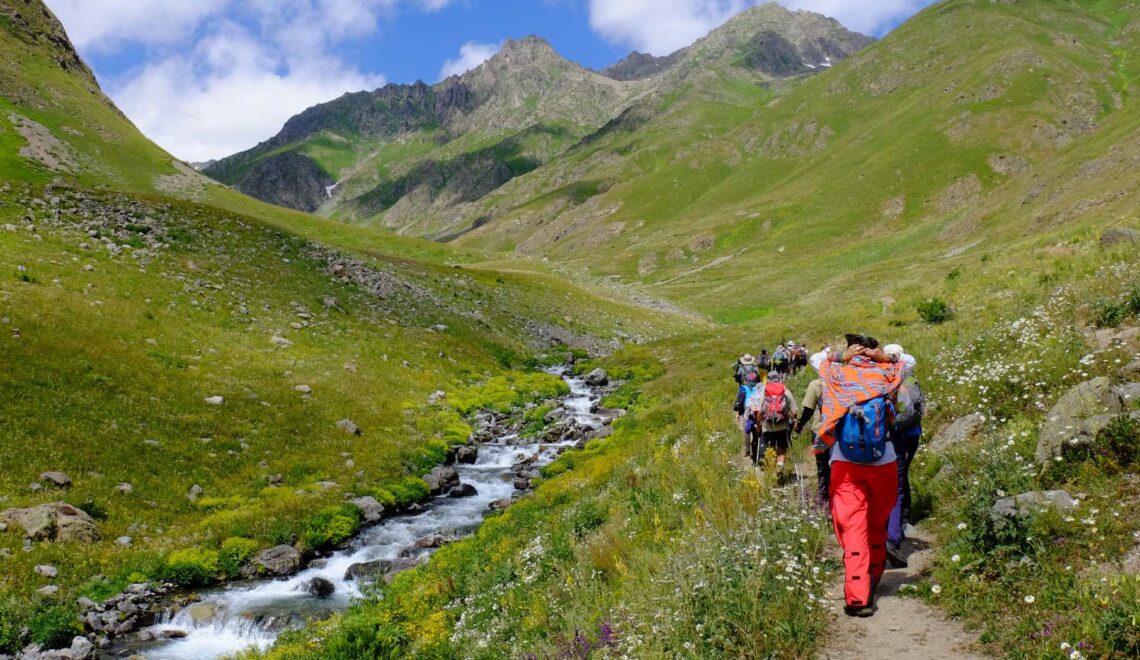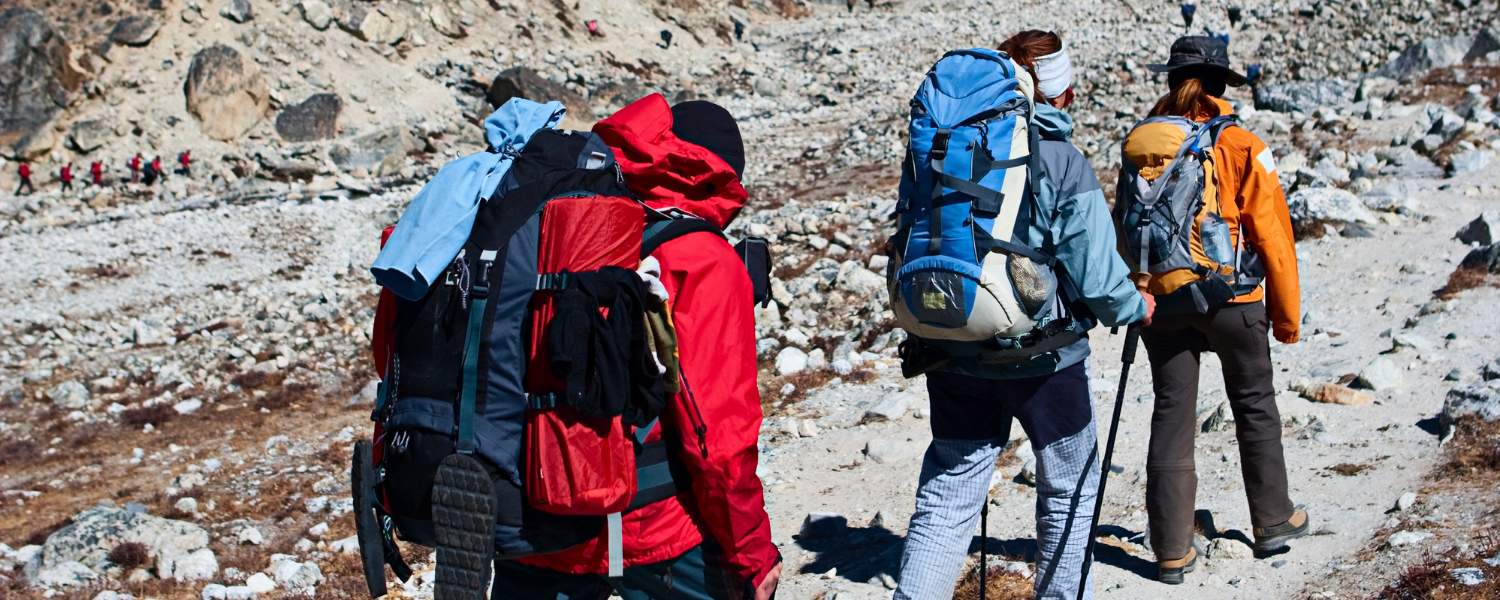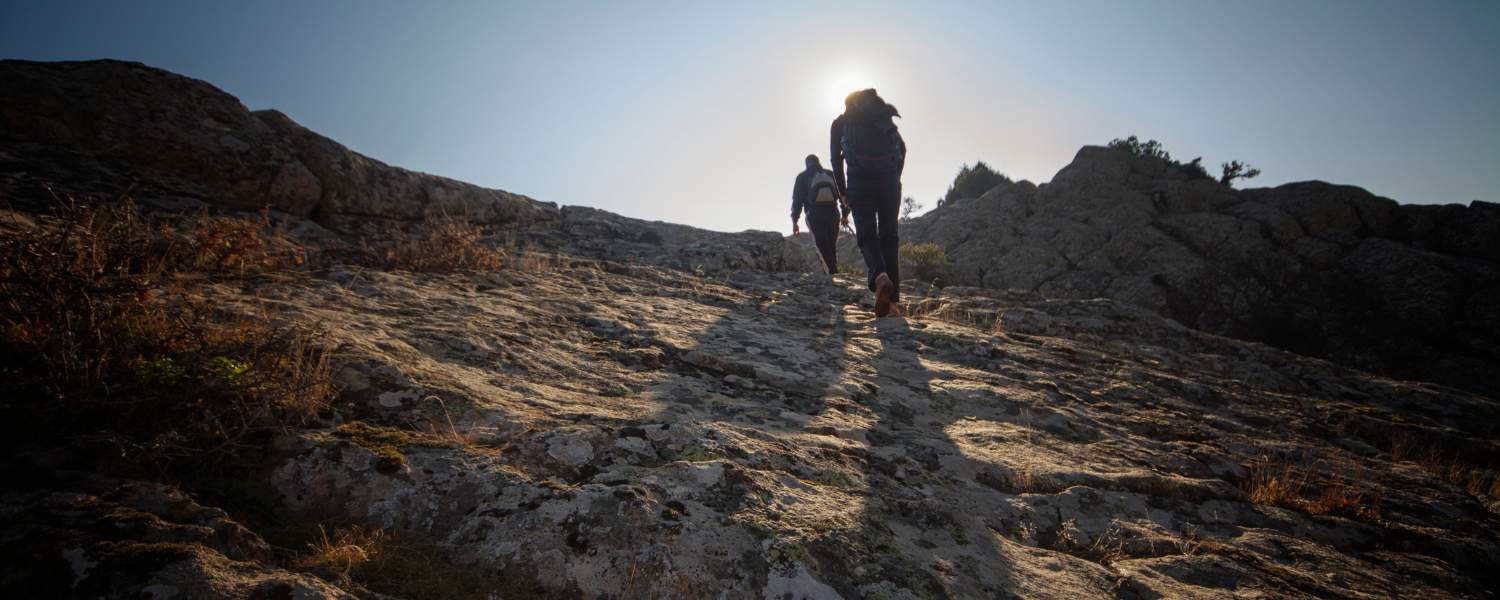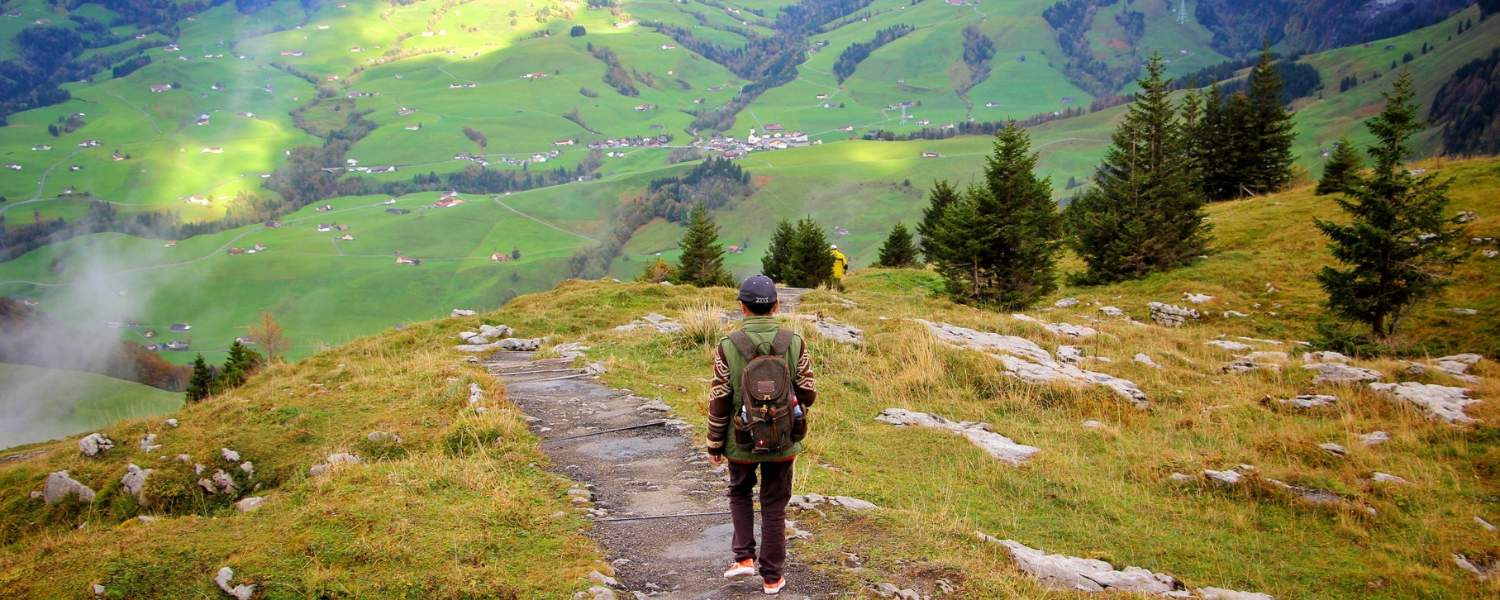What to Know Before Going Trekking In India?

Trekking in India is a thrilling adventure that makes you enjoy the landscapes and natural beauty of this vast and culturally rich country.
From the high mountains of the Himalayas to the lush Western Ghats, India offers a wide range of trekking opportunities for both beginners and seasoned trekkers.
However, before embarking on your trekking adventure, being well-prepared and informed about the essentials is crucial. This guide will help with the key aspects you need to know before setting out on a trekking expedition in India.
India, a land of contrasts and cultural tapestry, is a haven for trekking lovers. From the peaks of the Himalayas to the dense jungles of the Western Ghats, the trekking trails in India offer a kaleidoscope of experiences for adventurers of all levels.
We will open the secrets of trekking in India, exploring the breathtaking beauty, the diverse terrains, and the cultural nuances that make it a unique and enriching adventure.
Trekking in India is not merely a physical journey; it’s an immersion into the country’s soul. Each trail tells a story of ancient civilizations, diverse ecosystems, and the symbiotic relationship between nature and the people who call these regions home.
As you traverse the landscapes, you’ll witness the rich tapestry of India’s cultures, from the Himalayan villages with their unique traditions to the tribal communities nestled in the heart of the Western Ghats.
1. A Comprehensive Guide to Trekking In India’s Diverse Terrains and Seasons

Understanding the terrain is the first step to an enjoyable trekking experience in India. The keyword “Trekking In India” encompasses many landscapes with challenges and rewards.
Whether navigating rocky paths, crossing pristine rivers, or ascending to dizzying altitudes, knowing the terrain is crucial for selecting a trek that aligns with your skill level and interests.
“Trekking In India” is a year-round affair, but each season brings challenges and charms.
From the snow-clad wonderland of winter treks to the vibrant bloom of spring and the lush greenery of the monsoon, understanding the seasonal variations is key to planning a trek that aligns with your preferences and comfort levels.
As we embark on this comprehensive guide, we’ll equip you with the knowledge and insights to make your trekking adventure in India a physical endeavor and a cultural and spiritual odyssey.
So, tighten those shoelaces, adjust your backpack, and prepare to explore the mesmerizing world of trekking in India. The journey begins now, and the trails are waiting to reveal their secrets.
India boasts a variety of trekking terrains, ranging from easy trails to challenging high-altitude routes. Depending on your fitness level and experience, choosing a trek that aligns with your capabilities is essential.
The climate in India varies significantly across regions. It’s crucial to consider the season when planning your trek, as weather conditions can greatly impact your experience.
2. Essential Gear and Equipment

When preparing for a trekking adventure in the diverse terrains of India, having the right gear and equipment is paramount. Your journey’s success and comfort depend significantly on the items you pack.
This section will delve into the essential gear that should find a place in your backpack, ensuring you’re well-prepared for the challenges that “Trekking In India” may present.
a) Trekking Boots
At the heart of your gear arsenal are your trekking boots. India’s trekking trails traverse various terrains, from rocky mountain paths to slippery forest trails.
Buy high-quality, waterproof boots with ankle support to provide stability and protect your feet from uneven surfaces.
Quality boots are not just a comfort but a safety essential, especially when navigating the diverse landscapes “Trekking In India” offers.
b) Trekking Clothing
Choosing the right clothing is important for comfort and protection against the ever-changing weather. Layering is key, helping you to adapt to temperature deviations.
Moisture-wicking base layers keep you dry while insulating layers provide warmth.
A durable, waterproof jacket is a must, especially during the monsoon season. Consider lightweight and quick-drying fabrics to enhance mobility and comfort.
The keyword “Trekking In India” encompasses a range of climates, so packing versatile clothing is essential.
Pack layers to accommodate changing temperatures. Lightweight and moisture-wicking fabrics are ideal, and a good waterproof jacket is essential, especially during the monsoon season.
c) Backpack and Accessories
Your backpack is not just a vessel for carrying your belongings; it’s your lifeline during the trek.
Choose a bag with handles that can be adjusted for a perfect fit and ample compartments for organized packing.
Your backpack should include essentials such as a water bottle, headlamp or flashlight, trekking poles, and a first aid kit.
These accessories can significantly affect your comfort and safety, ensuring you’re well-prepared for any situation.
d) Sleeping Bag and Tent
For treks that involve camping or staying in remote areas, a reliable sleeping bag and a lightweight, weather-resistant tent become indispensable.
Choose a sleeping bag that handles the temperature of your trekking destination.
A good-quality tent gives protection from the segments, offering a secure and comfortable resting place after a day of exploring the trails.
e) Navigation Tools
Navigating the intricate trails of India requires reliable navigation tools. While many treks have well-marked paths, having a map, compass, or GPS device can be invaluable, especially in remote areas.
Familiarize yourself with the route before the trek and keep these tools handy to ensure you stay on course.
f) Hydration and Nutrition
Staying hydrated and well-nourished is crucial for maintaining energy levels during a trek. Keep a reusable water bottle and a purification system to ensure a safe water supply.
Pack energy-boosting snacks like trail mix, Snickers bars, and dried fruits to keep you energy throughout the day.
Adequate hydration and nutrition are key components of a successful trek, and these considerations are essential for “Trekking In India.”
g) Personal Care Items
In the diverse landscapes of India, personal care items take on added significance. Sunscreen, lip balm, insect repellent, and a basic hygiene kit are essential.
The keyword “Trekking In India” often involves exposure to different climates and altitudes, making these items crucial for your well-being.
h) Emergency and First Aid Kit
Preparedness for unforeseen situations is a hallmark of responsible trekking. Pack a first aid kit with ointment, pain relievers, and personal medications. Being equipped to handle minor injuries or illnesses ensures a smoother journey.
In conclusion, the right gear and equipment form the backbone of a successful trekking expedition in India.
As you prepare for the adventure, consider the diverse landscapes, climate variations, and the potential challenges that “Trekking In India” may present.
Investing in quality gear and meticulously packing your essentials will enhance your comfort and contribute to a safer and more enjoyable trekking experience.
So, gear up, pack wisely, and get ready to explore the incredible trails that await in the heart of India.
3. Safety Precautions

Trekking in India offers a spectacular journey through diverse landscapes, but ensuring your safety is paramount.
Understanding and implementing safety precautions is not just a matter of responsibility; it’s necessary for an enjoyable and incident-free trekking experience.
In this section, we will explore the key safety measures you should consider before embarking on the trails of “Trekking In India.”
a) Acclimatization
Proper acclimatization is crucial to avoid altitude sickness if you’re trekking at high altitudes. Take it slow, stay hydrated, and be aware of symptoms.
As you venture into higher altitudes during your trek, acclimatization becomes critical to safety.
Slowly ascending to higher altitudes allows your body to adjust to the decreased oxygen levels, minimizing the risk of altitude-related illnesses.
Pay attention to your body’s signals, stay well-hydrated, and take time to acclimate properly.
b) Local Regulations and Permits
Research and obtain any necessary permits for the trekking region you plan to visit.
It ensures a smooth and legal journey. Respecting local regulations and obtaining the required permits are fundamental safety measures when trekking in India.
Different regions have varying rules and restrictions, and obtaining the necessary permits ensures you’re within legal bounds.
It prevents potential legal complications and ensures local authorities know your presence, aiding rescue operations in emergencies.
Research the specific requirements for your trekking destination and obtain permits well in advance.
c) Weather Awareness
India’s diverse climate means that weather conditions can change rapidly.
Stay knowledgeable about the weather forecast for your trekking region, especially if you’re venturing into the Himalayas and trekking in Himalayas or other mountainous areas.
Being aware of potential weather challenges allows you to pack accordingly and adjust your itinerary if needed.
d) Emergency Protocols
In remote trekking areas, emergency services may be limited. It’s crucial to be prepared for unforeseen situations.
Carry a charged phone with emergency contacts, and invest in a satellite phone for areas with limited connectivity.
Get familiar with basic first aid and emergency protocols, and share your itinerary with someone trustworthy who can raise the alarm if you don’t check in as planned.
Being proactive and prepared is a cornerstone of safety in Trekking In India.
e) Terrain Awareness
Understanding the terrain you’ll be traversing is a safety precaution that can prevent accidents.
Whether navigating rocky paths, crossing rivers, or ascending steep slopes, knowing the terrain helps you make informed decisions and take appropriate precautions.
Pay attention to trail markers and signage; if in doubt, consult with local guides or fellow trekkers.
f) Group Trekking and Communication
While solo trekking can be a personal and reflective experience, trekking in a group enhances safety. The saying “safety in numbers” holds in the world of trekking.
If you’re trekking alone, inform someone trustworthy about your plans and expected return. Establish clear communication channels in a group and regularly check in with each other.
It not only ensures mutual safety but also fosters a sense of camaraderie on the trails.
g) Gear Check
Regularly inspecting and maintaining your trekking gear is a safety precaution often overlooked.
Before embarking on a trek, ensure your equipment, including boots, clothing, and camping gear, is in good condition.
A malfunctioning piece of gear can lead to discomfort or, in extreme cases, compromise your safety on the trail.
h) Wildlife Precautions
Many trekking trails in India pass through wildlife habitats. While encountering wildlife is a thrilling aspect of trekking, it’s essential to approach it cautiously.
Familiarize yourself with the wildlife in the region, maintain a distance, and follow guidelines provided by local authorities.
Wildlife encounters can be unpredictable, and taking precautions ensures your safety and the well-being of the animals.
4. Cultural Sensitivity

Trekking in India is not just a physical journey; it’s an immersion into the rich cultural tapestry that defines this diverse nation.
As you tread the trails, you become part of ecosystems intertwined with the lives and traditions of local communities.
In this section, we explore the vital importance of cultural sensitivity in the context of “Trekking In India.”
a) Respecting Local Communities
India is home to many cultures with unique customs, traditions, and rituals. Trekking trails often pass through villages and remote areas where local communities maintain age-old practices.
Respecting these customs is a sign of courtesy and is crucial for fostering positive interactions. Take the time to learn about the local customs before your trek.
Whether it’s a traditional greeting, a religious ritual, or specific rules about photography, being aware and respectful enriches your experience and the cultural integrity of the places you visit.
b) Minimal Environmental Impact
Cultural sensitivity extends to environmental consciousness.
The landscapes you traverse are not just natural wonders; they are the homes of diverse flora and fauna, often considered sacred by local communities.
Adhering to the principle of “Leave No Trace” is an expression of cultural sensitivity.
Dispose of waste responsibly, avoid picking plants or disturbing wildlife, and follow established paths to minimize environmental impact.
By doing so, you contribute to preserving the cultural and ecological balance of the regions you explore.
c) Interaction with Local Communities
Trekking routes often intersect with villages inhabited by indigenous or local communities. Approach these interactions with genuine curiosity and respect.
Seek permission before taking photographs, engage in conversations with humility, and be open to learning about the daily lives, traditions, and challenges of the communities you encounter.
Many local populations have a deep connection with the land, and understanding their perspectives enhances the cultural richness of your trekking experience.
d) Support Local Economies
Cultural sensitivity extends beyond interpersonal interactions to economic considerations. Support economies by purchasing services directly from the communities you encounter during your trek.
It fosters positive relationships and contributes to the sustainability of local livelihoods.
Whether buying handmade crafts, locally sourced food, or hiring local guides, your choices can positively impact the communities along your trekking route.
e) Learn Basic Local Phrases
While English is often understood in tourist destinations, learning and using basic local phrases can go a long way in building connections.
Simple greetings, expressions of gratitude, and polite inquiries show your respect for the local language and culture.
Locals appreciate the effort, and it creates a more meaningful and authentic cultural exchange.
f) Dress Modestly
India has diverse cultural norms, and dressing is a sign of respect in many regions. When trekking through villages or religious sites, opt for clothing that covers shoulders and knees.
It aligns with local customs and helps you blend seamlessly into the cultural fabric of the areas you traverse.
g) Participate Responsibly in Festivals and Events
If your trek coincides with local festivals or events, consider participating responsibly.
Seek guidance on appropriate behavior, dress code, and customs during these celebrations.
By engaging respectfully, you become an observer rather than an intruder, contributing to preserving cultural traditions.
h) Leave a Positive Impression
Your actions as a trekker contribute to the locals’ perception of tourists.
By embodying cultural sensitivity, you leave a positive impression that can shape future interactions between trekkers and local communities.
Be mindful of the places you visit, ensuring that your presence is a positive force for cultural understanding and mutual respect.
5. Health and Fitness

Embarking on a trekking adventure in India’s diverse landscapes demands a spirit of adventure and a commitment to physical and mental well-being.
This section will go into the essential parts of health and fitness that are crucial for a successful and enjoyable experience of “Trekking In India.”
a) Physical Preparation
Trekking can be physically demanding, so preparing your body through regular exercise and conditioning is essential.
Trekking in India often involves traversing challenging terrains, from steep ascents to rocky descents.
Being physically prepared is not only beneficial for completing the trek but also for preventing injuries.
Try incorporating learning exercises, strength training, and flexibility exercises into your routine.
Focus on building stamina, as trekking can be a sustained physical activity.
A well-rounded fitness regimen before your trek ensures that you’re adequately prepared for the demands of the trail.
b) Medical Considerations
Carry any necessary medications and consult a healthcare professional before trekking, especially if you have pre-existing conditions.
Consulting with healthcare before embarking on a trek is important if you have pre-existing medical conditions.
Discuss your trekking plans and any required vaccinations, and ensure you have an adequate supply of necessary medications.
A thorough health check ensures you’re physically prepared and can address potential health concerns before they become issues on the trail.
6. Choosing a Reputable Trekking Agency

1. Research and Reviews
Before selecting a trekking agency, read reviews and gather information about their track record. A reputable agency ensures a safer and more enjoyable trekking experience.
Before committing to a trekking agency, conduct thorough research.
Explore online reviews, forums, and testimonials from fellow trekkers who have experienced the agency’s services.
This feedback provides valuable insights into the agency’s track record, customer satisfaction, and overall reliability.
2. Certified Guides
Opt for trekking agencies that provide experienced and certified guides. Local guides enhance your safety and contribute to a more enriching cultural experience.
Look for affiliations with organizations such as the Indian Mountaineering Foundation or associations that oversee trekking activities in specific regions.
Certification ensures that the agency adheres to safety standards, employs qualified guides, and follows ethical practices.
3. Experienced and Certified Guides
The expertise and professionalism of trekking guides significantly impact your trekking experience.
Choose an agency that employs experienced and certified guides familiar with the region you plan to explore.
Guides are taught first aid and rescue procedures and know the local terrain, culture, and flora/fauna. Their guidance enhances both safety and the overall richness of your trek.
4. Comprehensive Services
A reputable trekking agency offers comprehensive services beyond guiding.
Look for agencies that provide pre-trek briefings, assistance with permits, transportation, accommodation, and emergency support.
A well-organized agency simplifies logistical aspects, allowing you to focus on the trek.
5. Customization Options
Each trekker has unique preferences and capabilities. A reputable agency understands this diversity and offers a degree of trekking suitable for various fitness levels, durations, and interests.
Whether you’re a beginner looking for a trek or an experienced trekker seeking an adventure, choose an agency that can tailor the trek to your specific requirements.
Responsible trekking includes minimizing the environmental impact. Choose an agency that advocates and practices responsible trekking principles.
It involves waste management, adherence to Leave No Trace principles, and efforts to minimize the ecological footprint of the trekking group.
Conclusion
Embarking on a trekking adventure in India can be a transformative experience, allowing you to connect with nature, challenge yourself, and immerse yourself in the country’s rich cultural tapestry.
Understanding the terrain, preparing the right gear, prioritizing safety, respecting local cultures, and maintaining good physical health can ensure a memorable and rewarding trekking experience. Whether you’re a novice trekker or an experienced mountaineer, the diverse landscapes of India offer something for everyone.
So, gear up, pack responsibly, and get ready to explore the breathtaking beauty of trekking in India.
In conclusion, selecting a reputable trekking agency is a pivotal step in ensuring the success of your trekking adventure in India.
By prioritizing research, safety, certification, and customer feedback, you lay the foundation for an enriching experience beyond the trails.
As you embark on the breathtaking landscapes of “Trekking In India,” let the expertise of a reputable agency be your guiding light, ensuring that every step on the trail is a journey of discovery and fulfillment.
Source : Trekking In India
.jpg)

0 Comments:
Post a Comment
Subscribe to Post Comments [Atom]
<< Home